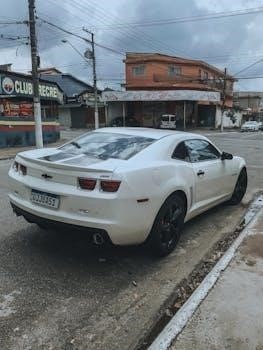
This guide addresses common issues in the 2010 Chevy Camaro. Many owners have reported problems. These include engine malfunctions, electrical failures, and transmission concerns. Addressing these promptly can extend your Camaro’s life.
Common Engine Problems
Several engine issues have been reported for the 2010 Chevy Camaro. Carbon buildup is a common problem in direct-injection engines. This affects the V6 models. Excessive oil consumption is also noted, potentially leading to class-action lawsuits against Chevrolet. Some owners have experienced blown engines. One reported it at 49,033 miles. Regular oil changes are crucial. Misfires are another frequent complaint, often linked to carbon deposits. Addressing these early is vital.
Timing chain wear is also a known issue, potentially causing significant engine damage if left unattended. Engine overheating can occur, indicating problems with the cooling system. Prompt diagnosis and repair are essential to prevent further damage. These problems affect the overall reliability.
Engine Overheating
Engine overheating is a critical issue that can severely damage your 2010 Chevy Camaro. Overheating can stem from various sources. These include a faulty water pump, leading to coolant loss. A malfunctioning thermostat can also restrict coolant flow. Radiator problems, such as clogs or leaks, can impair cooling efficiency. Low coolant levels, due to leaks or evaporation, are a common cause. Head gasket failure can also lead to overheating. This allows combustion gases to enter the cooling system.
Regularly check coolant levels. Inspect the radiator and hoses for leaks. Ensure the cooling fan operates correctly. Address any warning signs promptly. Ignoring overheating can cause extensive and costly engine damage.
Excessive Oil Consumption
Excessive oil consumption is a reported issue for 2010 Chevy Camaros. This can lead to engine damage if not addressed. Common causes include worn piston rings and valve seals. These allow oil to enter the combustion chamber and burn. High-mileage engines often exhibit this problem. Carbon deposits can exacerbate oil consumption. These deposits affect ring sealing and valve function.
Regularly check your oil level. Monitor for blue exhaust smoke. This indicates oil burning. Consider using a thicker oil to reduce consumption. Address any leaks promptly. Be aware that Chevrolet faced lawsuits over oil consumption issues. This potentially offers recourse for affected owners. Inspect your car regularly.
Timing Chain Wear
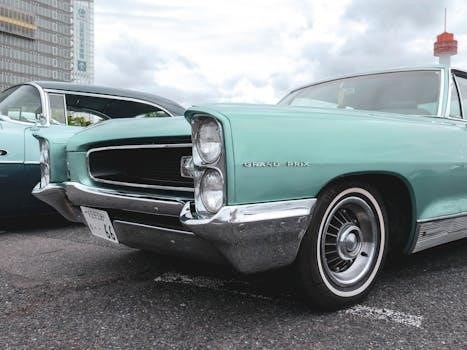
Premature timing chain wear is a known problem in 2010 Camaros. This issue can result in significant engine damage. The timing chain synchronizes the crankshaft and camshaft. Wear leads to improper timing. Listen for a rattling noise from the engine, especially on startup. This is a key symptom.
Regular oil changes are crucial for timing chain health. Old oil can degrade the chain tensioner. This accelerates wear. Consider using a high-quality synthetic oil. Inspect the timing chain components during routine maintenance. Replace the chain and related parts if wear is evident. Failure to address this can lead to engine failure. Stay alert to unusual sounds.
Misfires
Misfires are a common issue in the 2010 Chevy Camaro. They often stem from carbon deposits on the valves. Direct-injection engines, like those in many Camaros, are prone to this. Carbon buildup interferes with proper combustion. This leads to rough idling and reduced power. A check engine light will likely illuminate.
Cleaning the valves can resolve this problem. Use a specialized fuel system cleaner. Follow the product instructions carefully; Consider professional cleaning services for heavy buildup. Other causes include faulty spark plugs or ignition coils. Inspect and replace these components as needed. Address misfires promptly to prevent further engine damage. Regular maintenance is essential for preventing misfires.
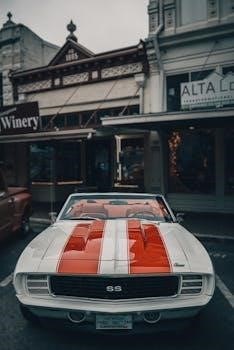
Electrical Issues
The 2010 Chevy Camaro faces several electrical problems. These range from starter failures due to heat to anti-theft system malfunctions. Fuse box issues are also common. Addressing these promptly is crucial for reliable operation.
Starter Problems Due to Heat
Many 2010 Chevy Camaro owners report starter problems related to excessive heat. The starter’s proximity to the engine without adequate heat shielding causes this. Over time, the heat can melt wires and damage fuses. This leads to electrical havoc and starter failure. Symptoms include difficulty starting the car, especially after it has been running. Sometimes, the car needs to cool down before it can be restarted.
Addressing this issue promptly is important to prevent further damage. Consider installing additional heat protection for the starter. Regularly inspect the wiring and fuses around the starter for signs of melting or damage. Replacing damaged components can help avoid more serious electrical problems. Some owners have found that aftermarket heat shields offer a reliable solution to this issue.
Anti-Theft System Problems
Some 2010 Chevy Camaro owners encounter issues with the anti-theft system, preventing the car from starting. The system may incorrectly recognize the key, immobilizing the vehicle. This problem often manifests as the car not starting, even with a functional battery. It also can be frustrating, leaving drivers stranded. Several factors can trigger these issues, including a faulty key chip or a malfunctioning anti-theft module;
Troubleshooting steps include ensuring the key’s chip is clean; Try using a spare key to rule out a key-related problem. If the issue persists, the anti-theft system may require reprogramming by a qualified technician. This can be resolved by a Chevrolet dealership. Ignoring this can lead to repeated start failures and the need for costly repairs.
Fuse Box Issues
The 2010 Chevy Camaro’s fuse box can be a source of electrical problems. Corrosion, loose connections, and blown fuses are common culprits. These issues can lead to various malfunctions, affecting lights, the radio, or other electronic components. Moisture is often a factor, particularly in regions with high humidity or frequent rain.
Regularly inspecting the fuse box is essential. Look for signs of corrosion or damage. Ensure all fuses are properly seated and replace any that are blown. A multimeter can help diagnose circuit continuity. Addressing fuse box issues promptly prevents more serious electrical problems. Neglecting these issues can lead to complete electrical failure, requiring extensive repairs. Consult a mechanic if problems persist.
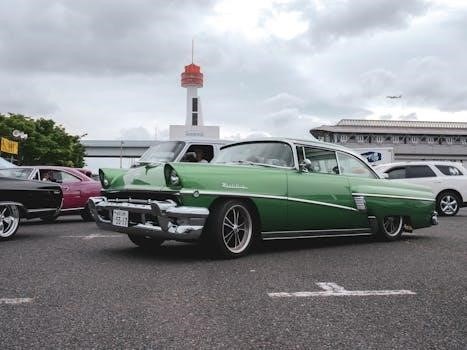
Transmission Problems
The 2010 Chevy Camaro can experience transmission issues. Automatic models may face shifter interlock failures. Addressing these problems promptly is crucial. Regular maintenance can prevent costly repairs and extend transmission life.
Faulty Shifter Interlock (Automatic Transmissions)
Some 2010 Chevy Camaro owners with automatic transmissions have reported issues with the shifter interlock. This mechanism prevents shifting out of “Park” unless the brake pedal is depressed. When faulty, it can prevent the driver from shifting gears. This can lead to the car being immobile or stuck in park.
Several factors can cause this issue. Wear and tear on the interlock solenoid is a common cause. Debris or obstructions in the shifter mechanism can also cause problems. Electrical faults in the system controlling the interlock are another potential culprit.
Diagnosing this issue typically involves checking the brake light switch, the interlock solenoid, and related wiring. Repair options range from cleaning the shifter mechanism to replacing the solenoid. In some cases, the entire shifter assembly may need replacement. Addressing this problem promptly ensures safe and reliable operation.
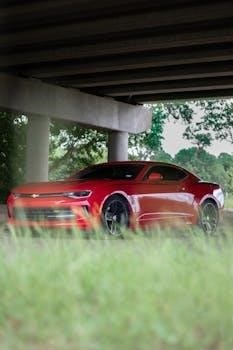
Airbag Issues
Airbag issues can arise in the 2010 Chevy Camaro. Problems range from warning lights to system malfunctions. These can compromise safety. Addressing airbag concerns promptly is crucial for driver and passenger safety.
Passenger-Side Airbag Problems
Some 2010 Chevrolet Camaro owners report issues with the passenger-side airbag system. These issues can range from the airbag not deploying in an accident. It may also involve the airbag warning light illuminating. A faulty sensor, wiring problem, or a malfunctioning airbag control module can cause these problems. Diagnosing the exact cause requires professional inspection.
A Chevrolet dealership or qualified mechanic can perform the necessary tests. They can use specialized equipment to read diagnostic codes. Addressing passenger-side airbag issues is critical for safety. A malfunctioning airbag can increase the risk of injury in a collision. It is important to seek immediate repair if you suspect any problems with the airbag system.